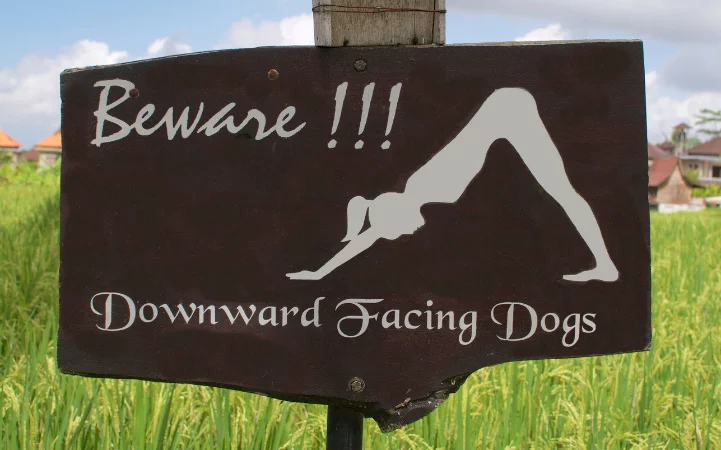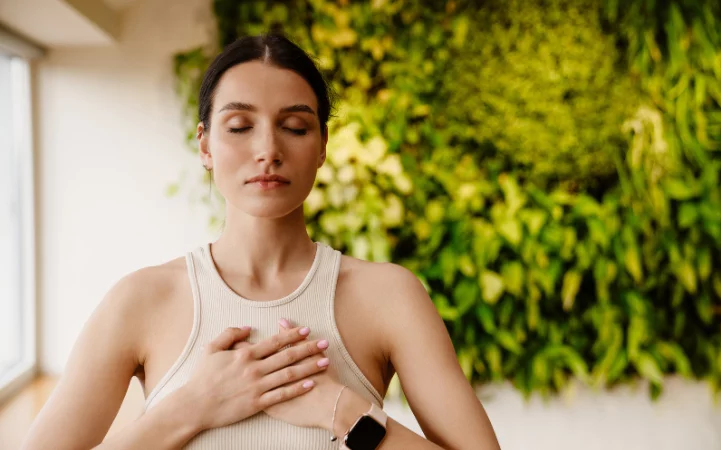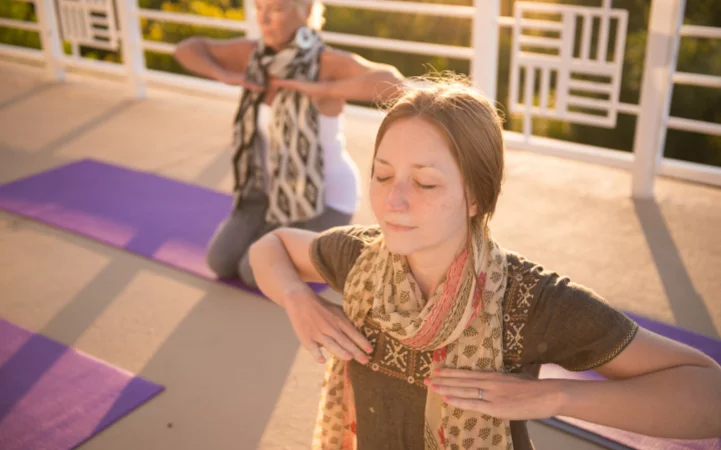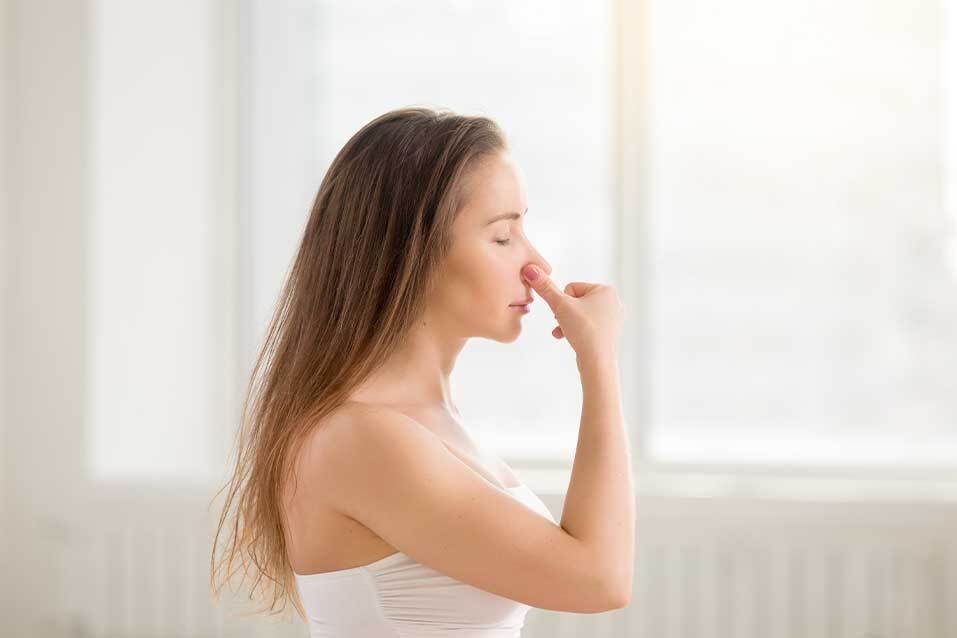
Poses
One of the most iconic yoga poses, Downward-facing Dog is a full-body stretch loved by dogs and humans alike! Read to learn more.
Downward-facing dog is one of the most widely recognized yoga poses. It provides a deep stretch for the arms and hamstrings. People of all levels can practice this pose.
A downward-facing dog is also known by its Sanskrit name, Adho Mukha Svanasana (AAH-doh-MOOK-ha-Svah-SUN-ah). Adho means downward, mukha means face, and asana means posture. The dog portion of the name comes from the fact that dogs naturally do this yoga pose. The downward-facing dog is also part of the Sun Salutation sequence.

In addition to a full body stretch, Downward-facing dog offers the following benefits:

If your health is generally good, you can practice downward-facing dog. It’s best to avoid this yoga posture if you have any of the following conditions:

Start on your hands and knees in a tabletop position with weight evenly distributed. Place your hands with your fingers wide directly under your shoulders and your knees underneath your hips.
On an exhalation, lift your hips upward to come into an inverted V-shape position.
Use your hands to press firmly into the mat, draw the shoulder blades inward, and make sure the feet are hip-distance apart and parallel. Do not let your rib cage sink toward the floor.
Relax your head and gaze toward the navel. Collar bones stay broad, while the neck and spine are long. Draw the kneecaps upward toward the hips.
If the spine is rounded at all, bend your knees to correct it: it is essential that the spine lengthens first.
You can use this as a resting pose while taking deep, full breaths.
Release the posture on an exhalation, return to the tabletop position, or relax into the child’s pose.

Tips
Always do a warm-up before any yoga practice. Even walking in place increases the heart rate and helps warm the whole body.
While in a downward dog pose, pedal the balls of your feet (this is also called “walking your dog”) to help stretch out tight calves.
It’s good to incorporate breathwork to prevent straining, improve the pose, and enhance the experience energetically.
Watch this video to learn victory beath (ocean breath), known as Ujjayi breath in Sanskrit. Ujjayi is the go-to breathing technique.
To modify
Start with your knees bent if you have tight hamstrings and/or calves. This helps alleviate lower and upper back pain.
Spread the distance between your feet until your feet are on the outer edges of your yoga mat.
You can also drop your knees onto your yoga mat

One of the best ways to use the Downward-facing dog as a transitional pose is to practice Sun Salutations. This series of yoga postures includes Prayer Pose, Raised Arms Pose, Hand-to-Foot Pose, Equestrian Pose, Plank Pose, Eight Point Salute, Cobra Pose, Downward-facing Dog Pose, and Mountain Pose. Read to learn more here.

Yoga is much more than just physical exercise. As we already mentioned, breathwork is valuable during your yoga practice, and using your breath for deep meditation is even more valuable.
SKY Breath Meditation offers many benefits, including greater mental focus, increased joy and life satisfaction, enhanced sleep, healthier blood pressure, and reduced anxiety and depression. You can learn SKY in the Art of Living Part 1 course. Register today and see for yourself what SKY can do for you!












